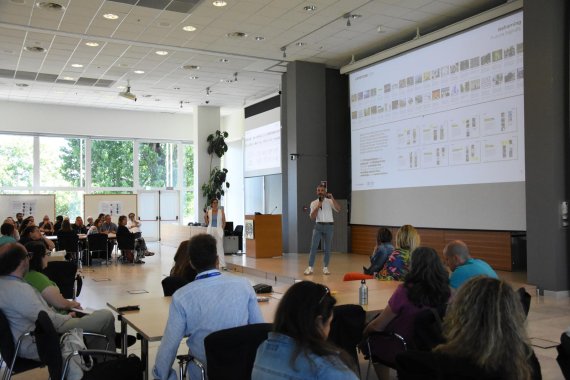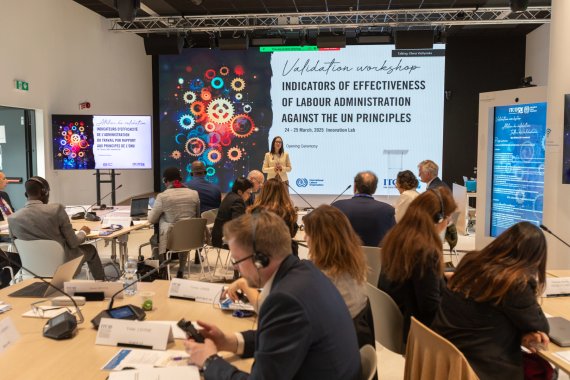Why social media mattered at the UNESCO Futures Literacy Summit
Why social media mattered at the UNESCO Futures Literacy Summit
We reached nearly 4 million people on social media. Here’s how we did it, and what it means for the future of United Nations promotion and engagement.
6 Mayo 2021

Our biggest takeaway from the UNESCO Futures Literacy Summit was that the future is not what we expected. There is a lot more to being futures literate than knowing how to plan or invent a scenario. We learned that there are diverse reasons and methods for imagining the future, as demonstrated by the methods of “using the future” showcased at the Summit.
The second biggest takeaway? You should start a social media post with a question.
Communicating about a global event is a maze. How do you raise awareness? Should you focus on social, web, email, or ads? Could you get published on an international news site?
It can be hard to know where to start. But two minds (or twenty!) are better than one. That’s why UNESCO partnered with the International Training Centre of the ILO to come up with an effective social media strategy for the Futures Literacy Summit, held from 8 to 12 December 2020.
Our creative and technical teams worked together to pinpoint five actionable areas:
- Highlight the human angle
- Share practical knowledge
- Build empathy
- Raise awareness
- Change behavior
Our impact and strategy
“We must transform from thinking in linearity to thinking in complexity.”
- Haoliang Xu, UN Assistant Secretary-General and UNDP Director of Bureau for Policy and Programme Support in New York
At the end of 2020, more than 8,000 people from all over the world gathered online at the UNESCO Futures Literacy Summit.
Here are some more key numbers from the event:
- 3.7 million+ people reached on social media
- 100+ mentions of #FuturesLiteracy on Twitter
- 6,300+ engagements (likes, comments, shares) on social media
- 8,000 people registered for the event
- 100+ articles, including on Forbes, Yahoo!, and Fast Company
Read on to learn more about how to communicate about a global event in 2021.
1. Highlight humans
5,500 participants! Join these creative and open minds to learn why Futures Literacy is an essential competency for the 21st century. Today is Day 1 of the Futures Literacy Summit, register - it's free: https://t.co/7CMbim1Vuv #FuturesLiteracy #ImagineFutures @futuryst
" pic.twitter.com/SwHjTk2O2r— Riel Miller (@RielM) December 8, 2020
This post reached more than 2,700 views.
When real people post, real people listen. Twitter, LinkedIn, and Facebook posts from leaders in the futures literacy field, including Riel Miller, attract thousands of views.
It’s all about building credibility.
2. Partner up
"One mistake people make when considering the future is that they tend to think linearly”. L’Atelier CEO, @iamjohnegan, gave his vision to understanding the future @UNESCO #Futures #literacy Summit. Register now to check out the replay of his interview: https://t.co/Lqko5N86rc pic.twitter.com/KysZLxPfYC
— Atelier BNP Paribas (@latelier) December 9, 2020
Atelier BNP was a sponsor of the event.
Partners can help amplify the reach of an event beyond your traditional audience. Create ready-to-post social media content to share with partners – they can reach beyond the limits of the first or second circle.
To further extend your reach, try to get featured in external media like journals, blogs, and podcasts.
3. Build empathy
Have you heard about Futures Literacy? This 21st century skill is all about using the future to innovate the present....
Posted by UNESCO on Monday, November 30, 2020
This post has it all: a conversation-starter with practical information and a link to the event.
The highest-performing posts all started with questions, like “Have you heard about Futures Literacy?” and “How can Futures Literacy improve policy making?” Quotes from prominent thinkers were also popular.
Keeping your target audience in mind will help you create more relevant and relatable social media posts.
Some tips: Capture their interest with a question. Provide important information, like dates and registration links. And, finally, tell them why they should join.
4. Use hashtags
What have you learned about Futures Literacy so far this year?
Expand your knowledge and connect with futures experts at...Posted by UNESCO on Thursday, December 10, 2020
#FuturesLiteracy, #ImagineTheFuture… what’s your event hashtag?
Your event probably has a dedicated hashtag. What other hashtags are floating around out there?
For example, the top five correlating hashtags for #FuturesLiteracy were #ImagineTheFuture, #Futures, #FuturesStudies, #Foresight, and #UNESCO. We also noted correlating keywords, like discuss, conversation, workshops, join, and imagination.
You can raise awareness about your topic of interest by building on adjacent ones. Work with what’s around you, not against it.
5. Change behavior
This post has not one, but two(!) calls to action (CTA). Both times, we’re asking the reader to do the same thing: sign up for the event.
If you want people to change what they’re doing, or to do something new, you need to guide them.
We ended every social media post with a clear and inspiring call to action, using words like join, register, and act. We basically said: This is what you should do, and why, and how.
What this means for the UN system
Here’s our key takeaway: Social media takes time, energy, and loads of empathy. Random posting doesn’t work, but building human connections and understanding your audience does.
Leverage social media by being imaginative, adaptive, and open to learning.
Exactly what futures literacy is all about.
Follow @ITCILO and @UNESCO as we keep tinkering with new ideas, learning from our global audiences, and adapting to new normals.


